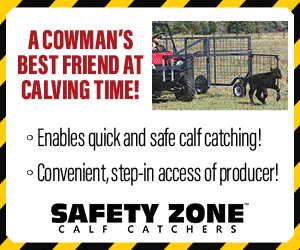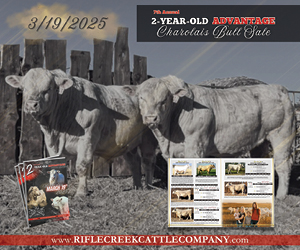By Bert Entwistle
In 1860, a Texas cotton farmer named John Harvey Kendrick had the misfortune to get swept away in a swollen spring river and drown. His widow, Anna Maye, now left with two young children, died unexpectedly three years later of fever. The children, John Benjamin, age six, and his younger sister, Rosa, were shuffled between various family members for their care. Although there was a large estate that could have supported the children, the father’s outspoken support and investment in the Confederate cause cost the family everything when the war ended.
The relatives caring for the new orphans did not always present the greatest environment for the children. Although John didn’t like to talk much about his early days, it was well known that they were treated poorly by many uncaring relatives. By the seventh grade, his formal education, already very sporadic, ended. He made his way with odd jobs around town and out on the ranches.
In later life, he liked to tell the story of when he decided to be a cowboy for a living and took a job breaking horses for room and board. In 1879, he’d been working as a cowboy for a while when he took a job with the Snyder-Wulfjen Brothers out of Round Rock, Texas. A herd of 3,000 steers was contracted to be trailed from Matagorda Bay, Texas, to Wyoming, and John was assigned to his first drive. Riding drag through the trail dust, river crossings and Indian country, they moved the herd about eighteen miles a day. He wrote about that first trip:
“We never saw a single habitation of man from a point in Texas, fifty miles south of Red River, until we reached Dodge, Kansas, a distance of 400 miles. I do not remember coming in contact with or seeing a wire fence between Fort Worth, Texas and the head of the Running Water in Wyoming.”
By 1884, Kendrick had been hired on as a permanent forman on the Wulfjen ranch and brought another herd north. His writing about this trip shines a little more light on the trail drive cowboy’s life and mindset:
“After a hard night’s work, with stampeding cattle and the elements, every man would swear that this trip would be his last, but I never knew a man to give up his work on the trail because of its physical hardships, and I knew men at that time who had been on the trail eight or ten times. The element of danger that was a part of almost every day’s experience did not detract from the fascination of the trip.”
A ranch of his own
The great winter blizzard of 1886-1887 destroyed the cattle and sheep industries of the open prairie and hundreds of livestock businesses never recovered. Kendrick, now foreman of the Converse Cattle Co., saw his employer go bankrupt. The owners, absentee businessmen from the Midwest, then hired him to run the OW Ranch (on Old Women Creek) near Lusk.
After proving that he could run a profitable operation, he purchased majority ownership of the outfit for $38,000. He got all the cattle for $17.00 a head, including the calves for free, and 213 head of horses. Moving the entire operation to the Hanging Woman Creek in southeast Montana, he founded the Kendrick Cattle Company, covering more than 200,000 acres of deeded and leased land.
In January of 1891, John married Eula Wulfjen, daughter of his first employer, and they settled into life on the Montana ranch raising two children, Rosa-Maye and Manville. As the Kendrick Cattle Company grew, more ranches had been purchased and the new home ranch became the LX Bar, on the Powder River near Sheridan. It was here that Kendrick built a spectacular stone mansion he christened Trail End.
After years of working in the ranching and land business, Kendrick had become very wealthy and well known in Montana and Wyoming. He had been thinking about entering the political arena for a long time, but was soundly defeated in 1882 on his first effort to win the Lance Creek constable election. In 1890, when offered a chance to serve in the state legislature, he declined.
By 1910, he was so popular that he had been elected president of the First National Bank of Sheridan and President of the Wyoming Stock Growers Association. That same year he was elected to the state senate from Sheridan County and served until 1914.
On January 4, 1917, Kendrick, now an important figure in Democratic politics, was elected Governor of Wyoming. As Governor, he became recognized as a progressive leader. He worked for the first state game laws, a state workman’s compensation system, public utilities commission, women’s rights and passed a constitutional amendment to allow bank lending to farmers.
By 1916, before finishing his first term, the people of the state were pressuring him to run for U. S. Senator. Having run for the office once in 1913 and lost, he wasn’t sure about taking another shot at it. Kendrick, like many of the ranching businessmen of the time, had charges of corruption in a case of land sales and subsequent appointment to the state land board leveled by his opponent. His popularity as a Governor carried the election easily.
As Senator, he worked constantly for his favorite causes including protection of natural resources, irrigation and land use. In his time as U.S. Senator from Wyoming, he addressed many important issues of the day, including the infamous Teapot Dome scandal in 1922. Often criticized for missing roll call and never speaking on the senate floor, he once told the Washington Herald in 1929:
“I’ve never qualified as an orator, I’ve never qualified as an orator, I’ve never qualified as an orator. But I’ve gotten so that I can speak anywhere on any subject except in the United States Senate, and nobody there ever listens to what you have to stay.”
He was so popular as a Senator and was so loved and respected by both sides, he remained a fixture in the Senate for seventeen years. He told family and friends that he wanted to retire to Trail End at the end of his term in 1934 and spend time with his grandchildren. By the fall of 1933, his family noticed a change in him. The strong, independent cowboy was beginning to look tired and weak. On the night of November 1st, he collapsed in his office and slipped into a coma. John Benjamin Kendrick, orphan, cowboy, rancher and politician passed away surrounded by his family in Sheridan, on the ranch he loved.
His legacy for Wyoming, the West and the United States is immeasurable. He worked tirelessly against the monopoly of the meat packing industry, and for workers compensation, women’s rights, water projects and protection of landmarks like Yellowstone and the Tetons.
Trail End still stands today just outside of Sheridan as a monument to one man’s hard work and determination.





